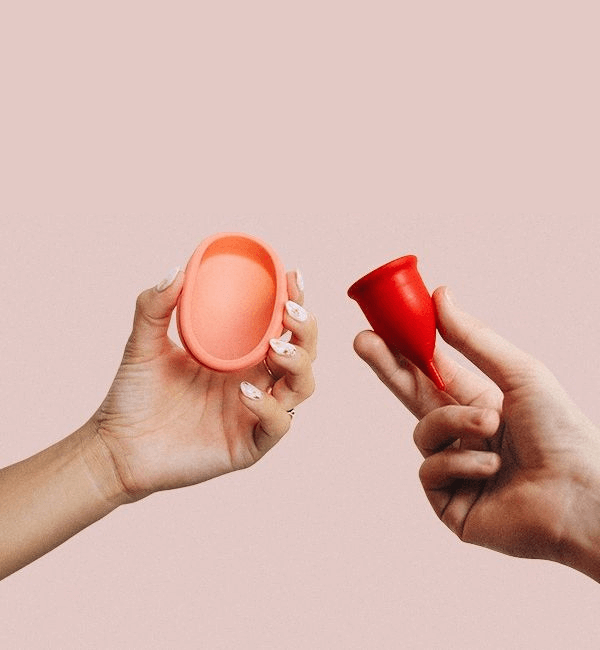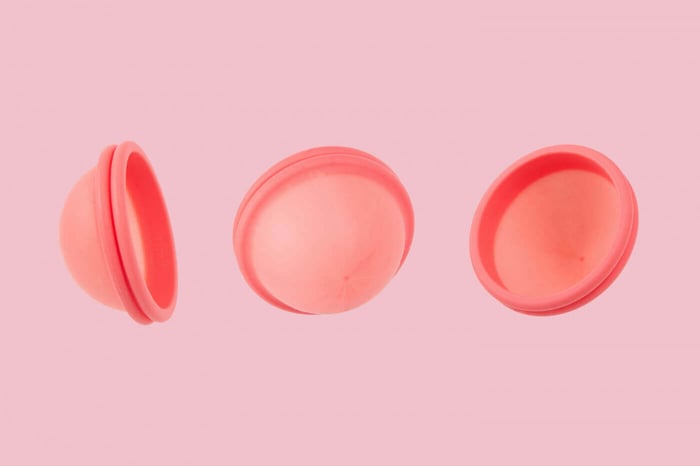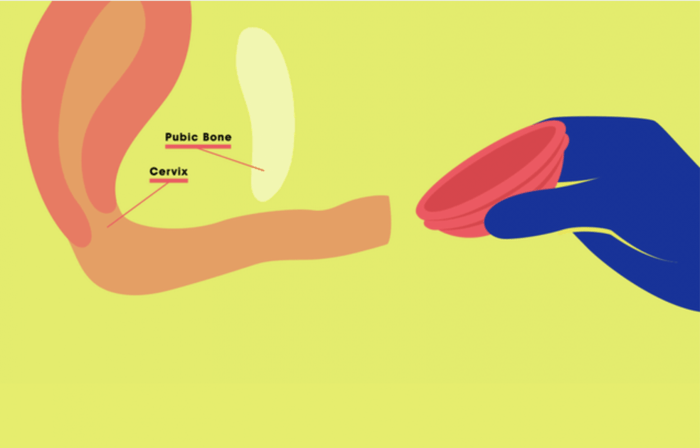Nearly half of our planet’s population menstruates and has been, for centuries. In fact, it’s estimated that approximately 1.8 billion girls, women, trans men, genderfluid, intersex, non-binary, and 2S people have a menstrual cycle.
Did you know ancient Egyptians used to use a tampon-shaped item with softened papyrus to absorb period blood? Or that in other parts of ancient Africa, rolled up mats of grass were the go-to period product? Even sea sponges made an appearance in the 19th century as a solution for odourless period care.
Flash forward to the present and you’ll find a variety of menstrual product options available. Despite existing for over a century, menstrual cups are only becoming mainstream now! With questions like, what is a menstrual cup, how does it work, is it comfortable, and will it work for you - and hundreds of different products, brands, sizes and materials to choose from - navigating through all the doubt can be tough.
Fun fact: Our founder created nixit out of her own confusion with the cup options available to her at the time. Instead of choosing one, she designed her own!
So worry not: our goal is to make everyone’s period process as simple and straightforward as possible, and understanding the options available to you thoroughly is the first step.
Let’s break this down.
What are menstrual cups?
Simply put, menstrual cups (also known as period discs or cups) are devices that are inserted into the vagina to collect period fluid (read: uterine lining, blood, vaginal fluid, cervical mucus, and sometimes clots). They’re usually made of medical grade silicone, latex, or plastic, depending on where you get them from. And yes, the ingredients you put inside your body matter (a lot!).
Bell-shaped menstrual cups are typically long and narrow, while disc-shaped menstrual cups are wide and short. All cups are foldable, but they vary in their firmness and flexibility. Depending on the cup, they can last anywhere from one to 10 years, making them a long-term, multi-use option.
Why use a menstrual cup over pads or tampons?
What makes menstrual cups stand out from other menstrual products is that they collect, rather than absorb, the period fluid. Tampons, disposable and reusable pads, and period underwear are all made of absorptive materials that soak up the fluid where they sit. Cups, on the other hand, collect it over a period of time and can be emptied and reinserted.
They also sit inside the body, unlike other products that absorb fluid after it exits the body. Being either in or above the vaginal canal allows them to collect the blood closer to where it comes from.
Now we know what you’re thinking - don’t tampons effectively do the same thing?
Well, yes… to an extent. They're both products that sit inside the body, but tampons' absorptive qualities come with their own set of complexities. Tampons can be abrasive, causing friction when inserting and removing, which can make them uncomfortable to use. They can also lead to vaginal dryness, which can in turn cause itching and other forms of discomfort.
Tampons have also been linked to toxic shock syndrome (TSS) through several studies. TSS is a serious condition: one that’s potentially life threatening. According to the Mayo Clinic, it’s caused by toxins produced by Staphylococcus aureus (staph) bacteria, and potentially also by toxins produced by group A streptococcus (strep) bacteria.
Read more about TSS symptoms and if you’re curious about how tampons functionally compare to cups.
Coming back to cups, one of the most important features of menstrual cups is that they lead to far less waste because they last for many, many periods! While pads and tampons are typically single-use and need to be restocked often, menstrual cups can last for years on end if treated well.
Now when it comes to their appearance, menstrual cups come in a range of different shapes and sizes. While all of them sit inside the body, cups generally fall under two main categories: disc-shaped and the more traditional bell-shaped.
These two are designed to be placed in slightly different areas of the vagina. Most disc-shaped menstrual cups sit at the base of the cervix, held in place by your anatomy. This type of cup is pushed through the vaginal canal, till the base of the cervix, an area called the vaginal fornix. It’s then tucked behind the pubic bone, allowing it to stay put until it’s time to be removed.
On the other hand, most traditional bell-shaped cups sit in the vaginal canal (where tampons sit) and are held in place by suction.
Here’s a quick comparison:
Product | Shape | Features |
Tampons |
|
|
Bell-shaped |
|
|
Disc-shaped / nixit |
|
|
How do I insert a menstrual cup?
Now that you know what it looks like, how it works, and where it sits, let's look at how you actually use one.
Menstrual cups, while differing slightly based on their shape, all need to be folded to be put in. Bell-shaped cups come in a bunch of different sizes, and can be folded in many different ways to be inserted. Most people tend to use one of two folds - the “punch down fold” or the “C-fold”.
Here’s a quick video about the various types of folding methods you could try for bell-shaped cups:
Now it’s possible for all of this to seem quite daunting. If you want a simpler solution, a reusable menstrual disc might be what you’re looking for. They are a one-size-fits-all product, so you don’t have to worry about which is best suited to you.
To insert a disc-shaped cup, simply pinch it in the middle, insert it into your vaginal canal, and slide it down and back towards your tailbone. Once it’s as far in as possible, tuck it up behind your pubic bone and you’re ready to take on the day.
Here’s a quick video to help:
nixit's menstrual disc is made entirely from soft silicone, so insertion is usually a straightforward process. It can sometimes take a few cycles to get the hang of it, but trust us when we say, it gets easier with time!
How do I remove a menstrual cup?
Removing menstrual cups is far simpler than inserting them for the first time. For bell-shaped cups, simply press at the bottom of the cup to release the suction. Then pinch and slide it out. For disc-shaped cups, using your finger in a ‘come hither’ motion, you can untuck it from behind the pubic bone and simply slide it out.
Here’s a super quick view of what disc insertion and removal would look like:
Theory aside, trust us when we say that practice makes perfect. It’s alright if you don’t get it right on the first go – it takes a couple of cycles to get used to the process. It’s also interesting to note that it won’t be the same every time. Did you know that your cervix moves around during your cycle? The most important bit is to stay calm and be patient with yourself!
Do menstrual cups hurt?
If everything goes right with your menstrual cup usage, you should feel absolutely no pain during its use.
However, you may experience some discomfort while getting started and learning how to use one. Some of the common reasons for cup related pain are:
Lack of lubrication. If you’re not used to the feeling of insertion, putting a cup in may feel a little forced. To aid this, using a little bit of water or water-based, silicone-safe lubricant can go a long way. Apply some along the rim of the cup, take a deep breath and try again.
Incompatible cup size. If you feel a sudden pain during or after insertion, your cup may be pressing against your cervix. This is more likely with bell-shaped cups because of their length. Try using a disc, or a shorter cup. Remember that ideally, you shouldn't feel anything once your cup is inserted.
Your cup is too firm. While nearly all cups are made from reusable silicone, they come in different shapes and thickness. If your cup is a bit too thick, you might feel discomfort while inserting. Try again with a thinner, more flexible cup like nixit and see if the discomfort persists.
Vaginismus. This is a rarely talked about condition where some people experience tightness along the walls of their vagina. If this is the case for you, seeking professional help is the best way to go.
In most cases, the right shape, a little lubrication and enough practice should set you up for menstrual cup success!
How do I clean a menstrual cup?
Hygiene is super important when using a menstrual cup. The easiest way to sanitize your cup is to place it in boiling water for 5 minutes between each cycle. The boiling water helps kill all the bacteria that might be present on the cup, so it’s squeaky clean when you put it in.
Remember that you don’t have to boil your menstrual cup during your cycle. A simple rinse with water and wash with unscented soap will do the job during your cycle. You could also use a dedicated cup wash between uses and if you’re on-the-go, our nixit cup wipes let you simply wipe your cup and reinsert - no water needed.
Do menstrual cups leak?
By design, menstrual cups shouldn’t leak. Most are created with a leak proof rim. However, considering that there is a slight learning curve with using a cup, you may see some leakage if not inserted correctly or if using the wrong size. For the first couple of months of cup usage, we recommend using a backup: panty liners and/or leak proof period underwear.
All that said, we’re confident that once you’re in the habit of using it, you’ll see no need for any backups and your period will be stress free.
Can menstrual cups get stuck (or worse, lost!)?
This is a common worry for many early or first-time users of the cup. While it is possible to experience some difficulty in removing the cup, especially if you’re not used to it, it is not possible for it to get stuck or “lost” inside of you.
Your vaginal canal ends at the vaginal fornix, or the base of the cervix. Even if your cup reaches your cervix, there’s nowhere else for it to go!

If you’re having trouble locating it, take a deep breath and position yourself comfortably. Then reach a finger in and try to feel it. Once you do, use your finger to dislodge it and slide it out.
If you’re still experiencing trouble, the most important thing is to stay calm - we know this is easier said than done. Leave your cup in for a little while, walk around, carry on with your day and try to remove it when you’re more relaxed. In case you’re still having trouble, you could visit your gynaecologist and let them help you with removal. Remember that it’s extremely unlikely that your cup will get stuck inside of you, so do not fear!
Pros and Cons
So we’ve pretty much covered the most important things you need to know in order to make the switch.
But in case of tl;dr, here’s the short version:
If you choose to invest in a disc or cup, you have one product for years of periods (depending on the cup you choose). You can use them for up to 12 hours at a time, and don’t need to worry about leaks. Your cup can be sterilized by boiling it, and you’re going to reduce a lot of waste.
However, if you get queasy at the sight of blood or don’t like the idea of inserting products, you might want to explore other product options.
If you’re just getting started with your menstrual cup/disc journey, we’d love for you to try out nixit. Our cup is one-size-fits-all which makes it great for beginners, and is made of super soft silicone which molds to your body shape for a personal fit.
Be sure to check out our range of period products before you go! Find menstrual discs, disc/cup wipes, personal wash and more.
Additional resources:
https://www.betterhealth.vic.gov.au/health/conditionsandtreatments/toxic-shock-syndrome-tss
https://www.webmd.com/women/menstrual-cup
https://www.medicalnewstoday.com/articles/325093#cons
https://www.mayoclinic.org/diseases-conditions/toxic-shock-syndrome/symptoms-causes/syc-20355384
https://www.healthline.com/health/menstrual-disc#removal







